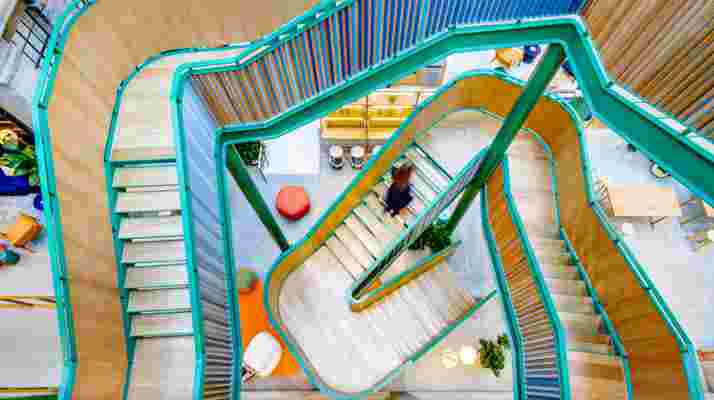WeWork Renovates a Former Shanghai Opium Factory into a Colorful Office
Despite the company’s rapid global expansion over the past several years, WeWork’s newest space, a light-filled atrium in Shanghai’s Jing'an district, shows the coworking enterprise hasn’t lost a shred of its start-up cool.
Coworking space is just the latest of iterations for the Weihai Lu building, which served first as a warehouse for the East India Company, then as artist studios and galleries, and, rumor has it, an opium factory. WeWork’s in-house design team collaborated with local firm Linehouse to create a luminous space that at once exemplifies the company’s brand of hipster chic while honoring elements of Shanghai vernacular. “Collaborating with Linehouse, our design teams wanted to celebrate the magnificence of the space and its rich history,” says Ashley Couch, senior associate director of interior design at WeWork. “We sought to encapsulate the feeling of a grand hotel by transporting members and guests on an unexpected journey that was playful, voyeuristic, and yet polished.”

A look down a staircase in the newly renovated office, which showcases the bold colors added to the space.
The result is playful indeed. Green-clad metalwork intersects the courtyard’s soaring walls, while pastel hues and midcentury furnishings fill the communal work spaces beneath. There’s even hand-painted poppy wallpaper in one of the building’s pantry spaces, a cheeky nod to its rich former life in the opium trade. Other details include a bar outfitted in retro tropical accents, neon artwork hung throughout, and a tasteful integration of zebra prints in the common areas.
The building joins WeWork’s portfolio of over 120 (and growing) locations in ten countries and 38 cities around the world, for which design is a central tenet. Says Couch, “We’re facilitating and driving experiences that intertwine with the existing architecture that are meaningful and bring them to life.”